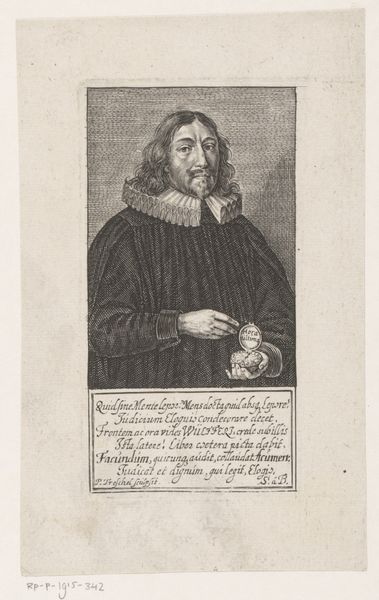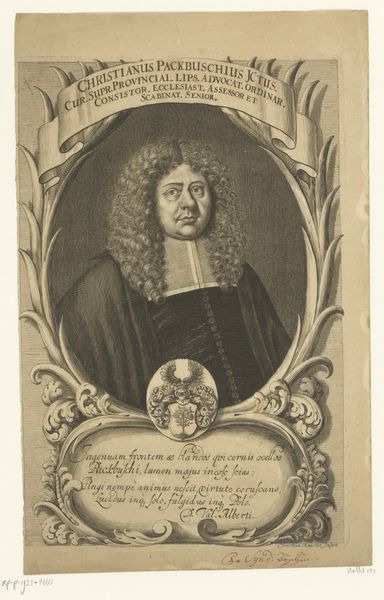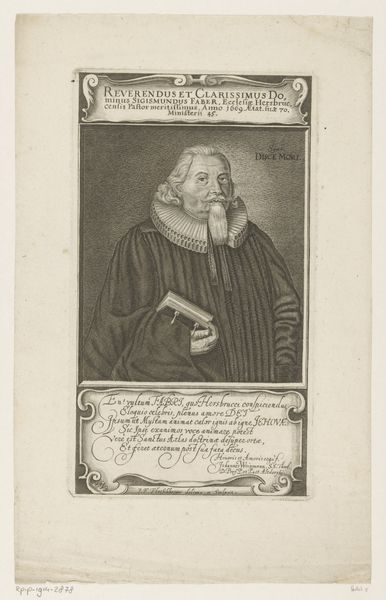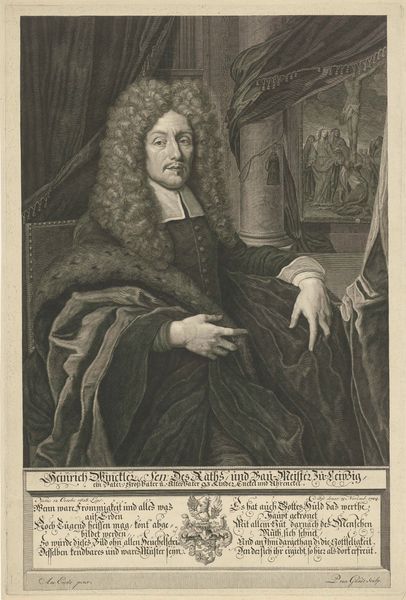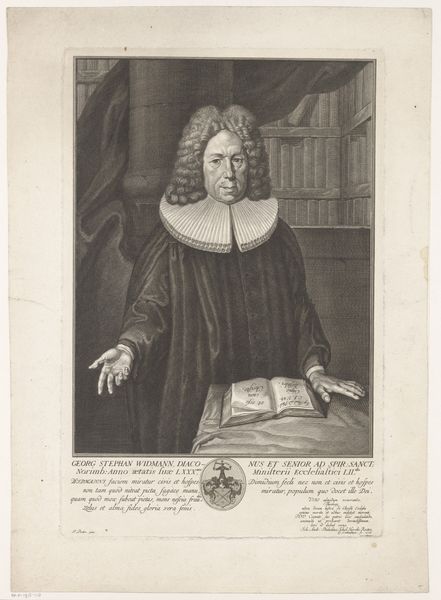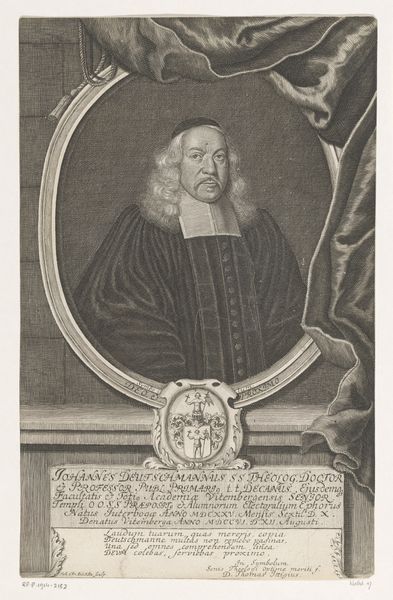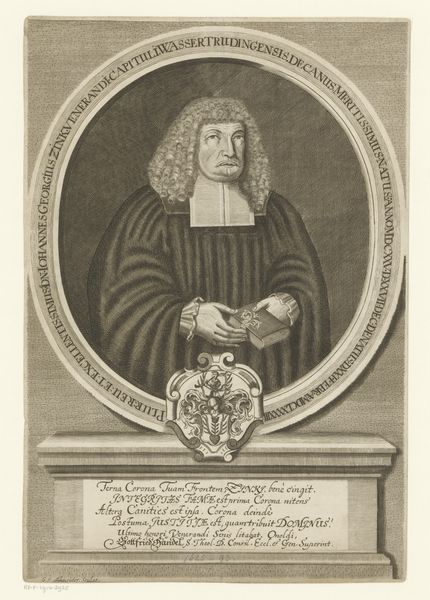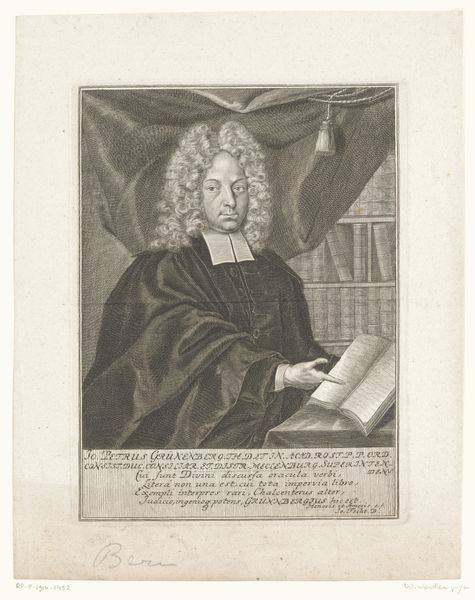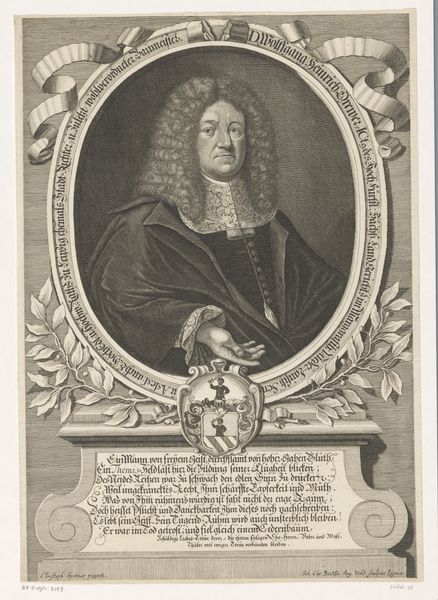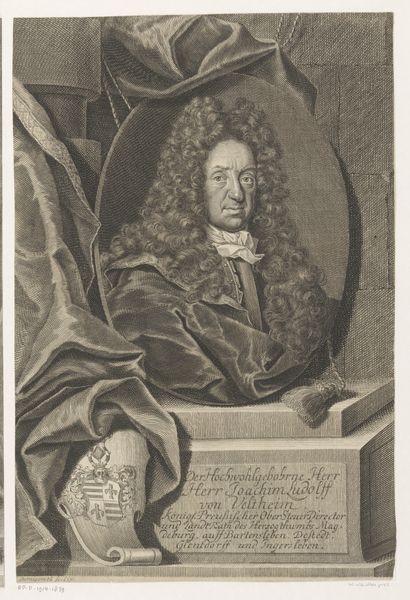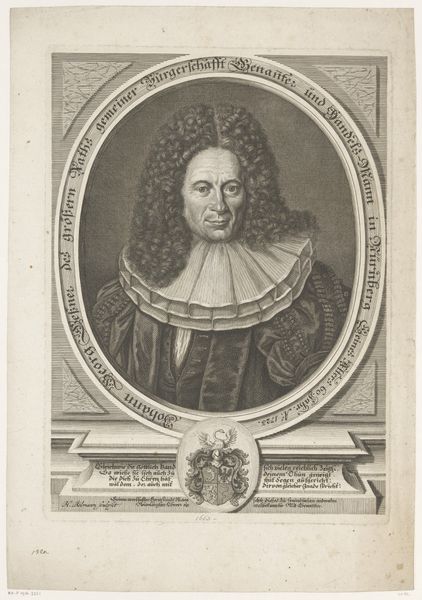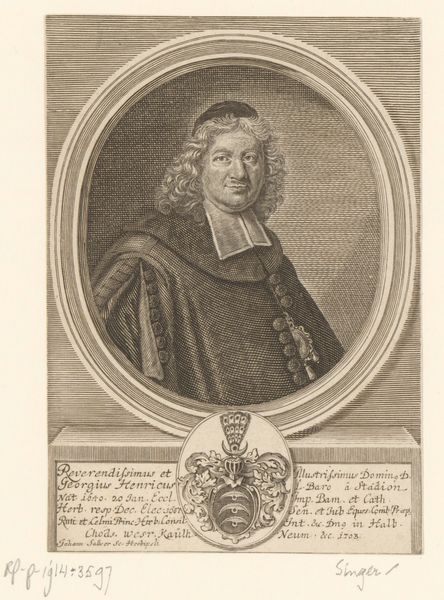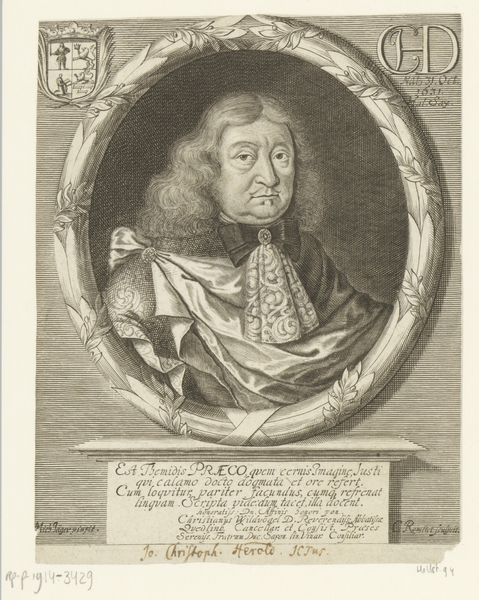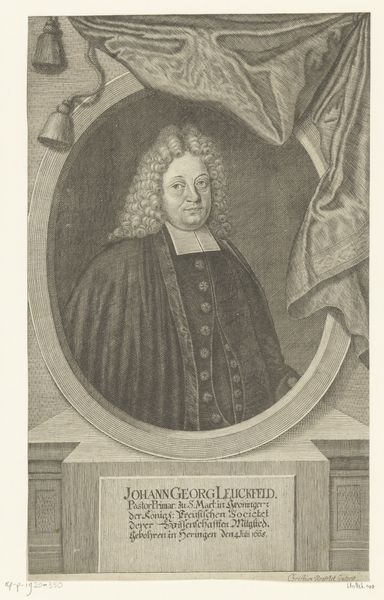
print, engraving
#
portrait
#
baroque
# print
#
old engraving style
#
history-painting
#
engraving
Dimensions: height 213 mm, width 135 mm
Copyright: Rijks Museum: Open Domain
Curator: This engraving, executed in 1660 by Matthias van Sommer, depicts Johann Conrad Gundelfinger. The details present this man in a fascinating way, especially considering the baroque influences and history painting themes. Editor: I find this rather somber at first glance. The monochrome print emphasizes sharp lines and deep shadows, contributing to a formal and perhaps slightly severe mood. Curator: Right, the technique here is noteworthy. Sommer really showcases his expertise in printmaking through incredibly fine lines. One notices a mastery in replicating tones and textures with those minimal means. The texture of Gundelfinger's cloak, juxtaposed against his lace collar, is stunning! The use of these various textural differences demonstrates the height of 17th-century craftsmanship. Editor: Absolutely. Focusing on composition, the placement of elements like the coat of arms on the upper left or the vista on the right contributes depth. It is balanced, yet has a lot of small interesting variations that your eyes are constantly going to. Also the composition focuses very acutely to the face. Curator: It certainly makes one wonder about Gundelfinger himself, wouldn't you say? The objects are representative of Gundelfinger's role in the Nerolingian Republic. The quality of his clothes clearly indicates high social standing and access to quality material production of the day. Even down to the engraving process itself, and the various professional involved to create this artwork demonstrates his prominent standing within society! Editor: I’m especially drawn to his expression, seemingly fixed but the eyes tell of a more deep emotion, perhaps melancholy? Also, one should not disregard the linguistic aspect, where it highlights certain qualities, perhaps something more "interior" as it suggest the person of Gundelfinger. It also includes reference to paternity in the inscription! Curator: A fascinating point about both the visual and textual representation. Overall this gives one a glimpse into the socio-political context, revealing so much more about labor relations. Editor: Yes, it truly is rewarding to see such a close formal relationship here to interpret the artistic expression.
Comments
No comments
Be the first to comment and join the conversation on the ultimate creative platform.
